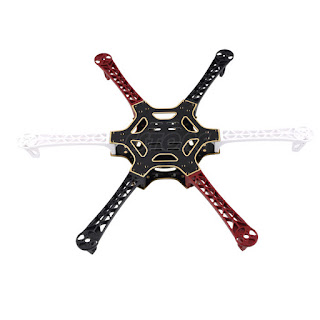I have now ordered the DJI F550 Frame for Hexacopter, and the DJI NAZA-M Lite Flight Controller.
I found 2 sellers on eBay that ships to my location.
The Frame was bought from here: eBay Link
The kit contains the 2 top and bottom plates, 6 arms, and the mounting nuts and screws. It comes unassembled, but as per the video tutorial I posted in my earlier post, it's quite easy to assemble. I'm hoping the package arrives within 2 weeks.
The Flight Controller System was bought from here: eBay Link
I went with the NAZA-M Light version rather than the NAZA-M V2 since the Light is simpler, and a bit more cheaper than the V2. If you like the V2, you can get it from here: link.
The kit should contain the NAZA Controller, Power Supply, the LED Unit, and the GPS Module, plus the cables needed to connect them all.
The kit should arrive within a week (hopefully) since I selected express delivery.
With the controller and the frame on the way, next thing to figure out is Motors, Propellers, and ESCs.
I found 2 sellers on eBay that ships to my location.
The Frame was bought from here: eBay Link
 |
| The DJI F550 Frame |
The Flight Controller System was bought from here: eBay Link
 |
| The NAZA-M Light Kit |
The kit should contain the NAZA Controller, Power Supply, the LED Unit, and the GPS Module, plus the cables needed to connect them all.
The kit should arrive within a week (hopefully) since I selected express delivery.
With the controller and the frame on the way, next thing to figure out is Motors, Propellers, and ESCs.
Comments
Post a Comment